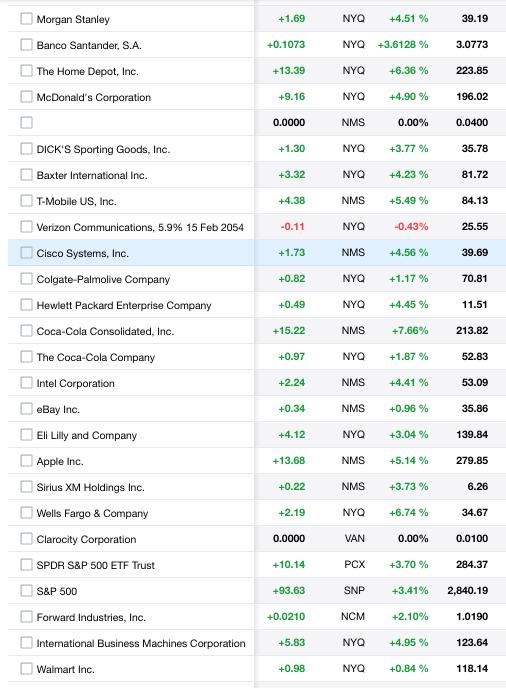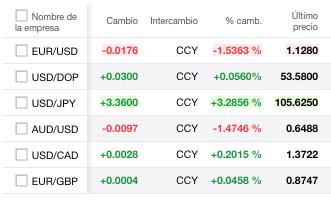
4 minute read
Wall Street dips on jitters ahead of Fed minutes
Wall Street’s main indexes fell on Wednesday ahead of the Federal Reserve’s June meeting minutes, while weak U.S. and China economic data as well as rising Sino-U.S. tensions dented investor sentiment.
May U.S. factory orders rose less than expected, according to a Commerce Department report, fanning fears of a slowdown due to high interest rates after data on Monday showed manufacturing slumped further last month.
Advertisement
Investors are focused on the Fed minutes, expected to be released around 2 p.m. ET, for clues on the central bank’s monetary policy path.
More economic data, including the non-farm payrolls, is scheduled for release later this week that could help determine the Fed’s rate trajectory.
Bets for a 25-basis-point rate increase in July stood at 88.7%, while traders have priced in just a 17.7% chance the central bank would deliver another hike in September, according to CME’s Fedwatch tool.

“Chairman Powell has mentioned that there is a bit of a tug of war at the Fed between those who are more dovish versus the more hawkish faction of the Federal Open Market Committee,” said Quincy Krosby, chief global strategist for LPL Financial.
“So the question has always been why did they choose that (June) meeting to skip rate hikes, because it was the first break in a nonstop campaign of raising rates.”
Chip stocks Intel and Micron Technology fell 2% each after China said it would control exports of some metals widely used in the semiconductor industry as tensions between Beijing and Washington rise over access to high-tech microchips.
The Philadelphia SE Semiconductor Index lost 1.4%.
After a sharp AI-fueled rally in the first half of the year, Wall Street kicked off the new quarter with slim gains in a holiday-shortened session on Monday, led by Tesla after the electric-vehicle company posted record second-quarter deliveries.
At 11:46 a.m. ET, the Dow Jones Industrial Average was down 56.47 points, or 0.16%, at 34,362.00, the S&P 500 was down 2.44 points, or 0.05%, at 4,453.15, and the Nasdaq Composite was down 9.20 points, or 0.07%, at 13,807.58.
Eight of the 11 major S&P 500 sectors declined by midday. Material shares led losses, down 2.0%.
Meta Platforms rose 3.4%, outpacing its megacap tech and growth peers, ahead of the expected release of its Twitter-rival app, Threads, on Thursday.
“Investors can’t help but be a little excited about the prospect that Meta really has a “Twitter-Killer” poised to launch on the app store,” said Danni Hewson, head of financial analysis at AJ Bell.
United Parcel Service slid 1.5% after the Teamsters Union and the postal service operator accused each other of
Most Assertive Stocks
walking away from negotiations over a new contract.
Moderna rose 3% after the drugmaker signed an agreement to work towards opportunities to research, develop and manufacture mRNA medicines in China.
General Motors added 1.1% after the car maker reported upbeat second-quarter U.S. auto sales, helped by easing supply chain pressures.
Declining issues outnumbered advancers by a 1.64-to-1 ratio on the NYSE and a 1.74-to-1 ratio on the Nasdaq.
The S&P index recorded 14 new 52-week highs and one new low, while the Nasdaq recorded 37 new highs and 45 new lows.
The tech-heavy Nasdaq was still on track for a gain of more than 29% in the first half of the year, its biggest such gain in 40 years. On Thursday it managed to pare losses and close barely lower but was under pressure throughout the day from losses in megacaps including Amazon, Meta Platform, Nvidia and Microsoft.
The Philadelphia semiconductor index managed a small 0.13% gain but underpeformed during the session, with a 4% decline in Micron Technology shares leading losses even though the chipmaker beat estimates for third-quarter results.
By CASSANDRA VINOGRAD
Ukraine’s military launched an overnight strike on the Russian-occupied city of Makiivka, setting off a huge blast and conflicting claims over what had been hit.
Both Ukrainian and Russian officials indicated that the attack in Makiivka was significant, but they differed on descriptions of the target. The attack came months after an assault by Ukraine’s forces on the city caused one of the largest losses of life for Russia’s troops in a single incident since the full-scale invasion.
Video of a massive fireball lighting up the night sky in Makiivka, in the Donetsk region of eastern Ukraine, started circulating on social media late Tuesday. Ukraine’s military shared the video in a post on the Telegram messaging app, saying that a “Russian base” in Makiivka had “ceased to exist,” thanks to Ukraine’s forces.
The claim could not be independently verified, and there was no immediate response from Russia’s Ministry of Defense. Videos geolocated by The New York Times confirmed that an explosion occurred on the outskirts of Makiivka. The initial explosion ignited multiple secondary explosions and flares before setting off a massive blast, suggesting the site may have been an arms depot.
Pro-Russian officials in Makiivka accused Ukraine on Wednesday morning of using Western-supplied long-range rockets and artillery to attack civilians. One man was killed and 68 civilians were wounded, the state-owned Russian news agency Tass reported, citing the local pro-Kremlin administration. It also quoted a local official, Igor Kimakovsky, as saying that HIMARS rockets and artillery had hit “peaceful” districts of the city. Those claims could also not be independently verified.
Makiivka has symbolic resonance in the 17-month-long war: A Ukrainian strike on a barracks there killed dozens of Russian soldiers on New Year’s Day, in an attack that prompted criticism of the Russian military among some prominent supporters of Moscow’s war effort and subsequent claims of retaliatory strikes from Russia’s Ministry of Defense.
At the time, Russian authorities blamed troops in Makiivka for exposing their location by using cellphones, enabling a strike by Ukrainian forces equipped with long-range weaponry from Western allies.

Adjacent to the city of Donetsk, Makiivka lies only about 10 miles from Ukrainian-held Avdiivka to the northwest — well within the roughly 50-mile range of the HIMARS rockets the United States has sent to Ukraine.
The HIMARS system is most effective against stationary targets that can be identified in advance and pinpointed, such as ammunition dumps, infrastructure or troop concentrations.










